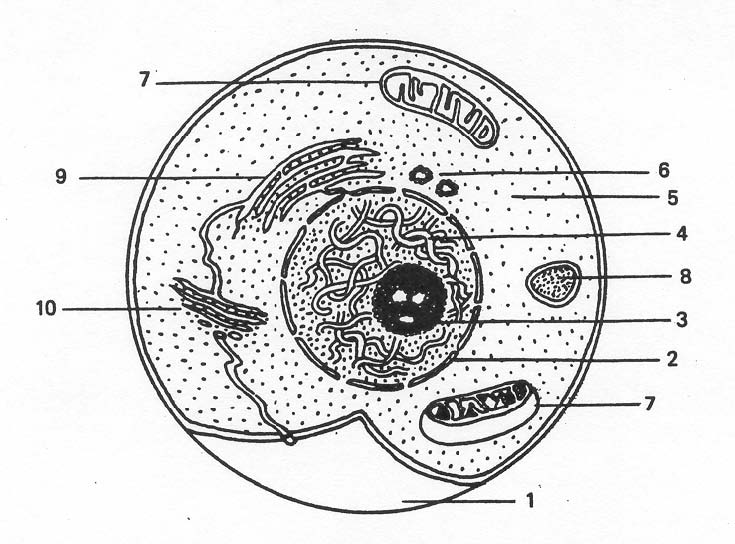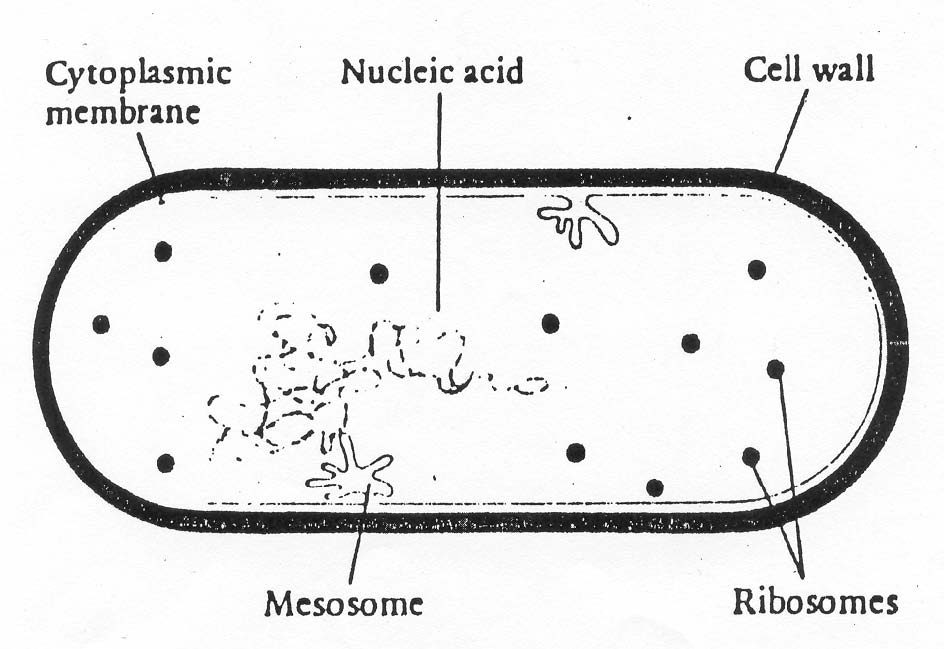Principles of Epidemiology and Microbiology
Lesson 2: Public Health Microbiology
Section I: Introduction
2-2
2-2. TYPES OF CELLS
a. General. The cell is the basic unit, or building block, of all living matter--plant or animal. A microorganism may consist of a single cell (unicellular) or, as in the higher forms of life, it may consist of a number of cells arranged to perform specific functions (multicellular). The cell determines not only the structure of organism, but also its function. The cell itself is made up of components that have specific functions, just as the organs comprising the body have specific functions. Modern classification systems are based largely on differences in cell types. The more primitive cells are known as prokaryotes, whereas higher forms are known as eucaryotes. Certain microorganisms exhibit prokaryotic cell types while other microbes are of the eucaryotic cell type.
b. Eucaryotic Cell Components. Eucaryotic cell organization is common to fungi and protozoa as well as to all higher multicellular organisms, including humans. Since every organism has a distinctive type of cell, there is no such thing as a "typical" cell. However, most eucaryotic cells consist of the following parts (figure 2-1).
(1) Cytoplasm. The cell is filled with a jelly-like fluid called the cytoplasm. Proteins and dissolved nutrients that are suspended in this fluid are used by the cell for metabolism and to build new cell structures. The cytoplasm contains organelles, intracellular structures bounded by membranes that separate their contents from the cytoplasm. Some organelles are described below.
(2) Nucleus. The organelle that contains the genetic material
(Chromosomes) and nucleolus.
(3) Genetic material, chromosomes. The genetic material contains the hereditary characteristics of the cell. It is made up op several long strands of DNA (deoxyribonucleic acid) that are called chromosomes.
(4) Nucleolus. An area of the nucleus that manufactures structural components used in protein synthesis.
(5) Nuclear membrane. Separates the nucleus from the cytoplasm, although pores permit the entrance and exit of certain chemicals.
(6) Mitochondria. Site where metabolic enzymes perform respiration (chemical oxidation) within the cell (conversion of food energy.)
(7) Cell membrane. Encloses the cell and governs the exchange of food material and release of waste products between the cell and its surroundings. In certain types of organisms, the cell membrane is enclosed within a cell wall that provides strength and rigidity, and is common to all classes of microorganisms.
Figure 2-1. The eucaryotic
(8) Lysosomes. Contains digestive enzymes that break down large molecules into smaller nutrients that can be oxidized by the mitochondria.
(9) Endoplasmic reticulum. Contains many ribosome’s that synthesize enzymes and other proteins
(10) Golgi apparatus. Accumulates proteins and enzymes and conveys some of them to the cell membrane for secretion. Some of the other enzymes are encased in lysosomes.
c. Prokaryotic Cell Components. Although structurally different and less complex than the eucaryotic cells, procaryotes (figure 2-2) still perform most of the same functions. The nuclear genetic material (DNA)
consists of a single, circular, threadlike chromosome. It is not enclosed within a nuclear membrane, but is distributed in masses throughout the cytoplasm. Another striking difference between the eucaryotic and prokaryotic cells is that the cytoplasm of procaryotes does not contain membrane-enclosed bodies such as mitochondria, endoplasmic reticulum, or golgi apparatus. Some procaryotes possess mesosomes that are somewhat similar to mitochondria in their function. Ribosomes (sites of protein synthesis) are distributed throughout the cytoplasm. With few exceptions, the prokaryotic cell is surrounded by a cell wall. These cell walls are not made of cellulose or polysaccharides; but contain peptidoglycan, which is found only in procaryotes. Cell division is by binary fission rather than mitosis or meiosis.
Figure 2-2. Prokaryotic cell.
d. Class Sporozoa (Obligate Parasites). These organisms are parasites having no organelles of locomotion. They have a complicated sexual-asexual life cycle consisting of several morphological stages. In order for the entire cycle to be completed, an intermediate arthropod host is necessary. These parasites invade and multiply in the cells of the host. The malaria parasites of man belong to this group. Figure 2-14 illustrates the life cycle of the malarial parasite.



